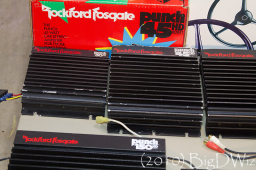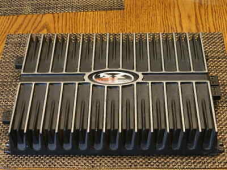Solar Charge Controllers all seem to use a panel watt rating that they base on max charge current they can deliver to the battery. As an example a 30 amp SCC will say 360w for 12v, 720w for 24v and so on. This causes no end of confusion since way too many people think that potential wattage will overwhelm the SCC.
Supply potential wattage is not actual wattage until a load occurs. Loads are what determine how many watts (amps at a voltage) flow.
You can have a huge supply and it does not overwhelm a load. Think of your house that likely has a 200 amp service at 240vAC - OMG that is 48,000 watts! It will burn your house down. But since all it is is potential that you could draw you are safe because you only need a few thousand watts to run various things.
Solar panels do not push power at the SCC. The SCC pulls power from them.
You want to add 3000w of panels to feed a 30 amp SCC? Go for it. You will safely max out at what ever amperage and charge voltage the SCC outputs. W=VA. I hear you asking where does the excess watts go? Are they clipped by the SCC? The answer is they were never generated. Not clipped or somehow shunted away.
So what is the one real danger of damaging a SCC from too many panels adding up to voltage higher than rated for? Excessive voltage. Same way if you plug a low voltage lightbulb into a high voltage socket. It goes poof.
Supply potential wattage is not actual wattage until a load occurs. Loads are what determine how many watts (amps at a voltage) flow.
You can have a huge supply and it does not overwhelm a load. Think of your house that likely has a 200 amp service at 240vAC - OMG that is 48,000 watts! It will burn your house down. But since all it is is potential that you could draw you are safe because you only need a few thousand watts to run various things.
Solar panels do not push power at the SCC. The SCC pulls power from them.
You want to add 3000w of panels to feed a 30 amp SCC? Go for it. You will safely max out at what ever amperage and charge voltage the SCC outputs. W=VA. I hear you asking where does the excess watts go? Are they clipped by the SCC? The answer is they were never generated. Not clipped or somehow shunted away.
So what is the one real danger of damaging a SCC from too many panels adding up to voltage higher than rated for? Excessive voltage. Same way if you plug a low voltage lightbulb into a high voltage socket. It goes poof.






